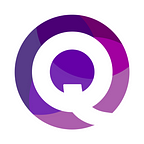On the daily, our team at Quilt.AI combines artificial intelligence with anthropological and semiotic qualitative analysis, to produce actionable insights for organizations. Recent research has got us looking at the shifting meaning of a home in the post-COVID era, young people’s attitudes towards family planning, and trends in online humour on twitter during COVID-19.
One of our latest outputs is a long-form report on US cell phone coverage advertising. Studying three of the biggest network operators in the US — AT&T, Verizon Wireless, and T-Mobile, we examined their brand messaging pre- and post-COVID, answering questions like:
What are these big brands communicating in their advertising
Semiotically, how has the coronavirus outbreak affected these brands’ messaging? What are key trends observed?
How relevant to consumer interests are the brands’ advertisements?
What is the way forward for these brands?
Here are some takeaways:
The advertisements of these three brands are more similar during COVID.
Several articles have been written about how the pandemic has homogenized advertising. How true is this for the telecommunications industry?
We extracted 12 video advertisements and 845 posts from the digital platforms of AT&T, Verizon Wireless, and T-Mobile, and ran them through our Culture AI engines.
We see from the map above that pre-COVID (left), from June 2019 to February 2020, the three brands were more semiotically different from each other.
Comparing this to their ad output during COVID (March to June 2020), we observe that distance between the three brands have decreased, showing that they have become more similar in terms semiotically.
We also see a huge shift in placement along the axes across all three companies, indicating a dramatic change in their advertising semiotics. We dive into 2 of these changes below:
Emotions AI analysis: Evoking the quality of safeness and calm during a Pandemic
We observed that the feeling of affection increased significantly during COVID, suggesting a concerted effort by brands to exude greater warmth in trying times. Other emotions of affiliation and creativity have risen as well, signalling companies’ efforts to empathetically build rapport with their audience.
Compared to posts made before COVID, we see that Excitement levels in newer posts have decreased. This signals a toning down of intensity in a time where consumers are seeking out calm amidst an excess of eventfulness and upset globally.
During Covid: A preference for text
Across AT&T, Verizon Wireless, and T-Mobile, our Culture AI detected an emerging preference for visual messaging containing text. Object detection revealed that text-related objects (e.g. “text”, “font” and “photo captions”) emerge as the most often identified objects in the images. Object detection showed that “Photography” remains as the top detected component, although it usually manifests as a background visual complementing text in images in our During-Covid dataset.
How might we analyse this shift in interplay between text and image?
We believe that this happens because brands want to make their voice louder.
Conventionally, social media posts of these brands follow a clear “Media”/“Description” demarcation. In this, the image or video one uploads occupies the role of “Art”, while text in the caption space occupies the accompanying role of “Explainer”. The captions for these images guide how viewers of the post may interpret the image, anchoring a specific meaning to it.
What we see happening during COVID is that text has moved into the image, forming a cohesive ‘text+image’ whole.
This means that while previously, the text performed a supporting role informing audiences’ understanding of the image, this ‘EVENT’ → ‘EXPLAINER’ process has now been streamlined, to offer a more unified interpreting experience. During COVID, text has stepped into the role of “Art”, and is now the ‘main event’ of the post too.
Overall, we see that advertising has become more nurturing and supportive, whether that’s through text or visual.
There are subtle differences: Verizon’s posts center around the theme of Recovery, focusing on reassuring their customers that the company is there to support them.
On the other hand, T-Mobile positions itself as an actor for change, focusing on communicating the promotions and support they are providing frontline workers and fresh graduates. Of the three, our analysis reveals that AT&T’s ads are the most commercial in feel- they are still focused on advertising products, although with a pivot to show products compatible with lockdown lifestyles e.g. an online summer camp for children.
If you are interested in the full report, or in finding out more about how Quilt.AI innovates to help you achieve your business objectives, get in touch with anurag.banerjee@quilt.ai!
Also read:
Making Machines Human: How Quilt.AI is indexing Humanity at Scale
